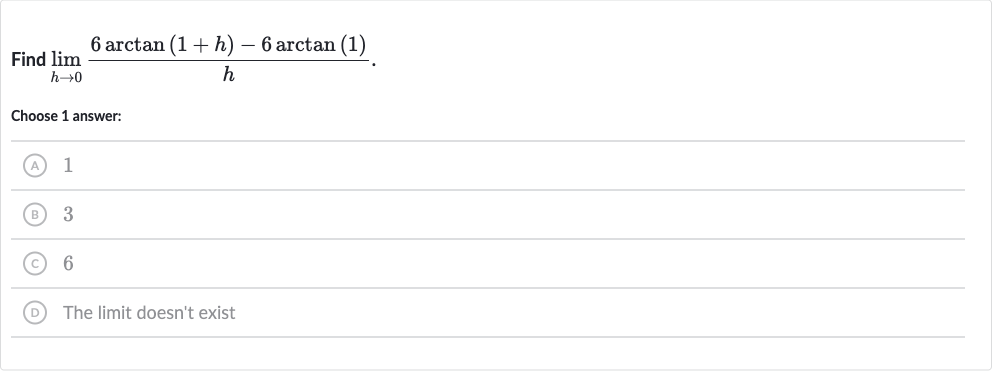Full solution
Q. Find .Choose answer:(A) (B) (C) (D) The limit doesn't exist
- Identify Limit: Identify the limit to solve.
- Simplify with : Use the fact that to simplify the expression.
- Apply Limit to Terms: Apply the limit to the term.
- Simplify Constant Term: Simplify the second term, as is a constant and its limit as approaches is .
- Apply L'Hôpital's Rule: Apply L'Hôpital's Rule to the first term since it's in the indeterminate form .
- Differentiate : Differentiate with respect to .
- Substitute Derivative: Substitute the derivative back into the limit.
- Evaluate Limit: Evaluate the limit by plugging in .
More problems from Solve quadratic inequalities
QuestionGet tutor help
QuestionGet tutor help
QuestionGet tutor help
QuestionGet tutor help
QuestionGet tutor help
QuestionGet tutor help
QuestionGet tutor help
QuestionGet tutor help

